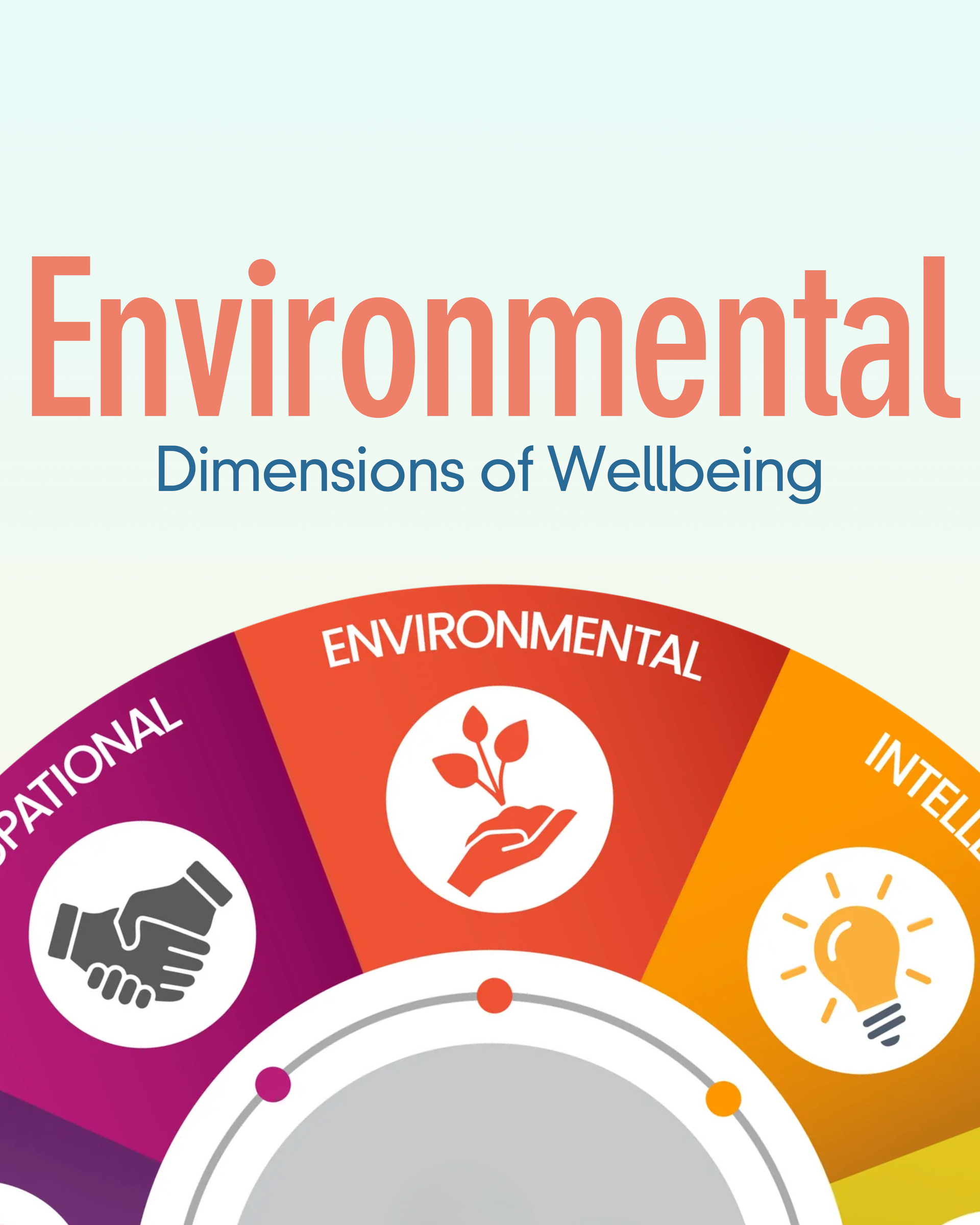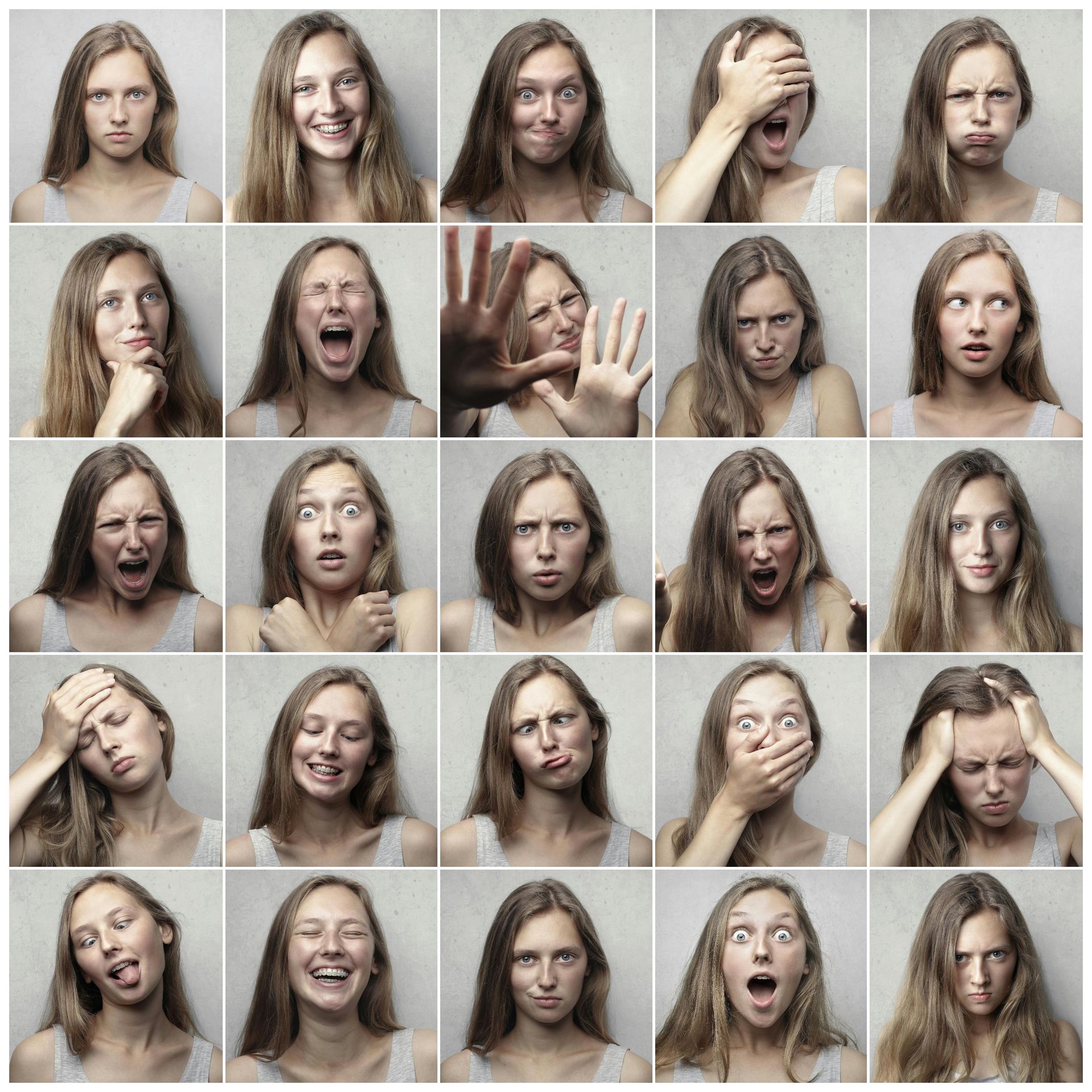The 8 Dimensions of Wellbeing: Environmental Wellbeing

When we talk about your “wellbeing” as a college student, we’re talking about more than having a good attitude or hitting the gym. Wellbeing is made up of eight interconnected dimensions that shape how we feel, function, and live. These include emotional, physical, social, intellectual, spiritual, environmental, occupational, and financial wellbeing. When one area is off, it can affect all the others.
In this post, we’re taking a closer look at the sixth dimension: Environmental Wellbeing.
What Is Environmental Wellbeing?
Environmental wellbeing is about the spaces and surroundings you live, learn, and exist in. It includes your physical environment like your dorm, apartment, campus, or where you go to study, as well as your connection to the natural world.
It also reflects how safe, comfortable, and supported you feel in those environments. Are your spaces cluttered or calming? Do they energize you or leave you drained? Is your environment helping you thrive, or is it quietly working against you?
Environmental wellbeing also includes sustainability and your relationship with the planet, but at its core, it starts with your immediate surroundings.
How Environmental Wellbeing Shows Up
This dimension is often underestimated, but your environment plays a huge role in your ability to focus, rest, feel motivated, or even just breathe deeply. Signs your environmental wellbeing is in a good place might include:
- You have spaces that feel clean, safe, and organized enough to support your daily needs.
- Your room or living space reflects your personality and brings you a sense of calm or inspiration.
- You feel recharged by time in nature whether that’s walking outside, sitting under a tree, or just getting some sun.
- You make intentional choices about your physical surroundings (lighting, noise, decor, plants, etc.) to support your wellbeing.
- You feel like your campus or living situation is generally a safe and supportive place to be.
When your environment is aligned with your needs, you don’t just feel more at ease, you’re better able to focus, sleep, create, and connect.
What to Watch For

College environments aren’t always ideal. Shared spaces, limited budgets, loud dorms, or constant screen time can take a toll. Some signs your environmental wellbeing might need attention include:
- Feeling overstimulated, distracted, or anxious in your current space
- Not wanting to spend time in your dorm or apartment because it feels chaotic or uncomfortable
- Being surrounded by clutter or disorganization that makes it hard to focus or relax
- Rarely going outside or spending time in green spaces
- Not feeling safe or at ease in your living or learning environment

None of these are your fault and sometimes you don’t even have full control over your surroundings. But even small shifts (like decluttering a desk, opening a window, or finding a quiet nook on campus) can begin to improve this dimension.
When you think about improving your environment, you may immediately think of a Pinterest-perfect dorm room or living completely zero-waste. But let’s start smaller. The goal here is to become more aware of how your environment affects your energy, mindset, and overall wellbeing and to create conditions, wherever possible, that help you feel supported.
Coming Up Next:
Occupational Wellbeing










